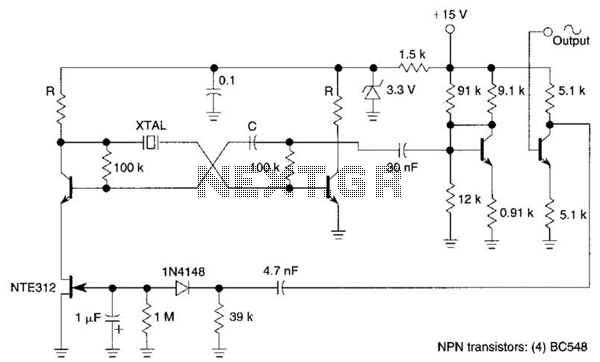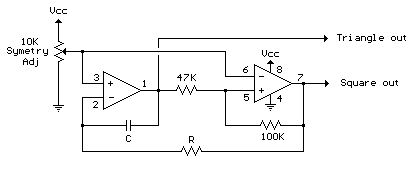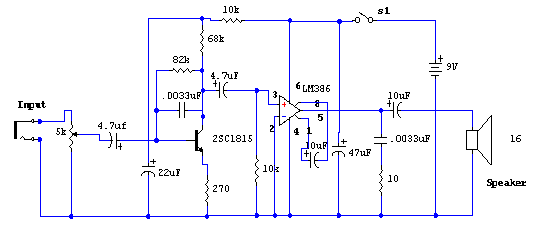
Frequency counter using PIC16f84

This is a simple frequency counter based on the microcontroller PIC16F84. Its maximum operating frequency is approximately 30 MHz, with a resolution of 10 Hz and low current consumption of 15 mA. The assembly process is straightforward. The device employs a seven-segment LED display to show the frequency. The electrical schematic is uncomplicated, as most functions are managed by the microprocessor. An alternative version of this counter utilizes LCD displays and offers additional features. Refer to the digital frequency counter for the circuit of a VHF pre-scaler.
The frequency counter described utilizes the PIC16F84 microcontroller, which is a popular choice for low-power applications due to its efficient architecture and capabilities. The design is optimized for a maximum frequency detection of 30 MHz, making it suitable for a range of RF applications. The 10 Hz resolution ensures that the counter can accurately measure and display frequency variations, which is critical in many electronic testing environments.
The low current consumption of 15 mA indicates that this device can operate effectively in battery-powered applications or in situations where power efficiency is a concern. The simplicity of assembly is a significant advantage, allowing users with basic soldering skills to construct the device without extensive technical knowledge.
The use of a seven-segment LED display provides clear and immediate visual feedback of the frequency being measured. This type of display is well-suited for quick readings, although it may limit the amount of information displayed compared to more advanced options such as LCDs.
The schematic design leverages the microcontroller to handle most of the frequency counting functions, reducing the need for additional discrete components and simplifying the overall circuit design. This approach not only minimizes the physical footprint of the circuit but also enhances reliability by reducing the number of potential failure points.
For users seeking a more advanced version, the alternative frequency counter that incorporates LCD displays offers enhanced features, likely including more complex user interfaces and additional measurement functionalities. The reference to a digital frequency counter with a VHF pre-scaler suggests that this design can be adapted for higher frequency ranges, further extending its applicability in various electronic measurement scenarios.This is a simple frequency counter based on a micro-controller PIC16F84. Its maximum working frequency is around 30MHz, and have a 10Hz resolution, and having low current consumption (15mA), and very simple assembly. This uses 7 numbers seven segment LED display to display the frequency. The electrical schematic is very simple, given that most of the functions are implemented by microprocessor. Here is another version of this counter, using LCD displays and having many more features. Check Digital frequency counter to get the circuit of a VHF pre-scalar. 🔗 External reference
The frequency counter described utilizes the PIC16F84 microcontroller, which is a popular choice for low-power applications due to its efficient architecture and capabilities. The design is optimized for a maximum frequency detection of 30 MHz, making it suitable for a range of RF applications. The 10 Hz resolution ensures that the counter can accurately measure and display frequency variations, which is critical in many electronic testing environments.
The low current consumption of 15 mA indicates that this device can operate effectively in battery-powered applications or in situations where power efficiency is a concern. The simplicity of assembly is a significant advantage, allowing users with basic soldering skills to construct the device without extensive technical knowledge.
The use of a seven-segment LED display provides clear and immediate visual feedback of the frequency being measured. This type of display is well-suited for quick readings, although it may limit the amount of information displayed compared to more advanced options such as LCDs.
The schematic design leverages the microcontroller to handle most of the frequency counting functions, reducing the need for additional discrete components and simplifying the overall circuit design. This approach not only minimizes the physical footprint of the circuit but also enhances reliability by reducing the number of potential failure points.
For users seeking a more advanced version, the alternative frequency counter that incorporates LCD displays offers enhanced features, likely including more complex user interfaces and additional measurement functionalities. The reference to a digital frequency counter with a VHF pre-scaler suggests that this design can be adapted for higher frequency ranges, further extending its applicability in various electronic measurement scenarios.This is a simple frequency counter based on a micro-controller PIC16F84. Its maximum working frequency is around 30MHz, and have a 10Hz resolution, and having low current consumption (15mA), and very simple assembly. This uses 7 numbers seven segment LED display to display the frequency. The electrical schematic is very simple, given that most of the functions are implemented by microprocessor. Here is another version of this counter, using LCD displays and having many more features. Check Digital frequency counter to get the circuit of a VHF pre-scalar. 🔗 External reference





